The functional and palaeoecological implications of tooth morphology and wear for the megaherbivorous dinosaurs from the Dinosaur Park Formation (upper Campanian) of Alberta, Canada
- PMID: 24918431
- PMCID: PMC4053334
- DOI: 10.1371/journal.pone.0098605
The functional and palaeoecological implications of tooth morphology and wear for the megaherbivorous dinosaurs from the Dinosaur Park Formation (upper Campanian) of Alberta, Canada
Abstract
Megaherbivorous dinosaurs were exceptionally diverse on the Late Cretaceous island continent of Laramidia, and a growing body of evidence suggests that this diversity was facilitated by dietary niche partitioning. We test this hypothesis using the fossil megaherbivore assemblage from the Dinosaur Park Formation (upper Campanian) of Alberta as a model. Comparative tooth morphology and wear, including the first use of quantitative dental microwear analysis in the context of Cretaceous palaeosynecology, are used to infer the mechanical properties of the foods these dinosaurs consumed. The phylliform teeth of ankylosaurs were poorly adapted for habitually processing high-fibre plant matter. Nevertheless, ankylosaur diets were likely more varied than traditionally assumed: the relatively large, bladed teeth of nodosaurids would have been better adapted to processing a tougher, more fibrous diet than the smaller, cusp-like teeth of ankylosaurids. Ankylosaur microwear is characterized by a preponderance of pits and scratches, akin to modern mixed feeders, but offers no support for interspecific dietary differences. The shearing tooth batteries of ceratopsids are much better adapted to high-fibre herbivory, attested by their scratch-dominated microwear signature. There is tentative microwear evidence to suggest differences in the feeding habits of centrosaurines and chasmosaurines, but statistical support is not significant. The tooth batteries of hadrosaurids were capable of both shearing and crushing functions, suggestive of a broad dietary range. Their microwear signal overlaps broadly with that of ankylosaurs, and suggests possible dietary differences between hadrosaurines and lambeosaurines. Tooth wear evidence further indicates that all forms considered here exhibited some degree of masticatory propaliny. Our findings reveal that tooth morphology and wear exhibit different, but complimentary, dietary signals that combine to support the hypothesis of dietary niche partitioning. The inferred mechanical and dietary patterns appear constant over the 1.5 Myr timespan of the Dinosaur Park Formation megaherbivore chronofauna, despite continual species turnover.
Conflict of interest statement
Figures
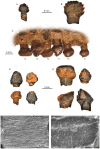

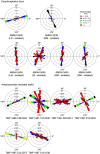

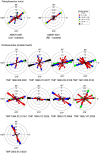
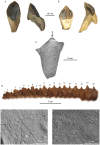

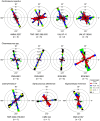


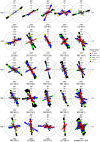

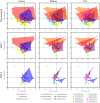
References
-
- Fritz H, Duncan P, Gordon IJ, Illius AW (2002) Megaherbivores influence trophic guilds structure in African ungulate communities. Oecologia 131: 620–625. - PubMed
-
- Owen-Smith RN (1988) Megaherbivores: The influence of very large body size on ecology. Cambridge: Cambridge University Press. 369 p.
-
- Sinclair ARE (1975) The resource limitation of trophic levels in tropical grassland ecosystems. J Anim Ecol 44: 497–520.
-
- Sinclair ARE, Mduma S, Brashares JS (2003) Patterns of predation in a diverse predator-prey system. Nature 425: 288–290. - PubMed
Publication types
MeSH terms
LinkOut - more resources
Full Text Sources
Other Literature Sources

